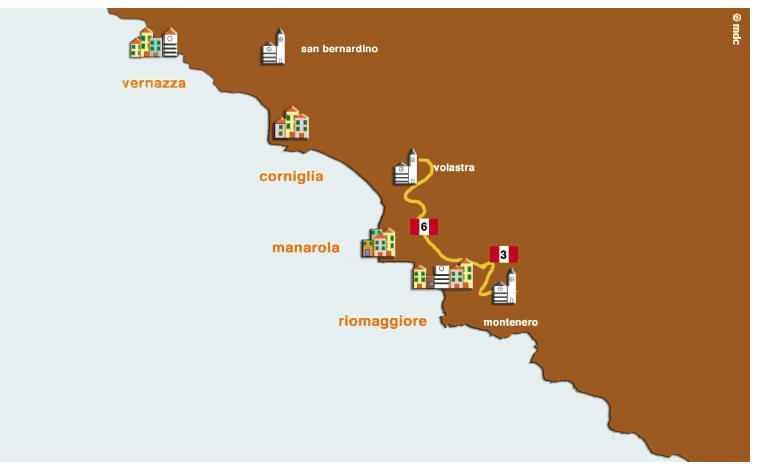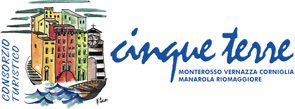To each of these five villages of the Cinque Terre, halfway up the hill, corresponds a santuario (Sanctuary) to which the inhabitants have always been tied by profound devotion. Five churches linked to their respective villages by steep mule-tracks, real “Via Crucis” routes still used today by believers during annual Festivals. The Via dei Santuari (road of the Sanctuaries) is of great historic and naturalistic interest, its horizontal route which unites all five buildings of worship. We are dealing with a historic itinerary, to do on foot, on horseback or by bicycle, which crosses terraced land, allotments, old cottages, small nuclei of houses often abandoned and which gives uncomparable views of the Cinque Terre and notable points of historic and spiritual reflection. A simple route, easy for anyone, which can be split up into stages.
Departing from Soviore one goes a few hundred metres along the road Levanto-Pignone, up to the beginning of path 8/b, a little before Colle Termine. The panoramic and straight route, goes past allotments, dry stone walls and streams, immersed in the Mediterranean, reborn after a devastating fire a few years ago. Leaving the road one descends to cross the torrent Mulinaro, one continues on towards the Capanna Ricchetto to then descend again along the Mesorana Costa (Mesorana Coast). Again a short flat part and one reaches the road which links Vernazza to the Foce Drignana. From here, after several bends, a short path takes one to the santuario della Madonna di Reggio (Sanctuary of the Virgin Mary of Reggio) below.
Alternative: in front of the fountain at one end of the church square the path no. 8 begins its descent to Vernazza railway station.
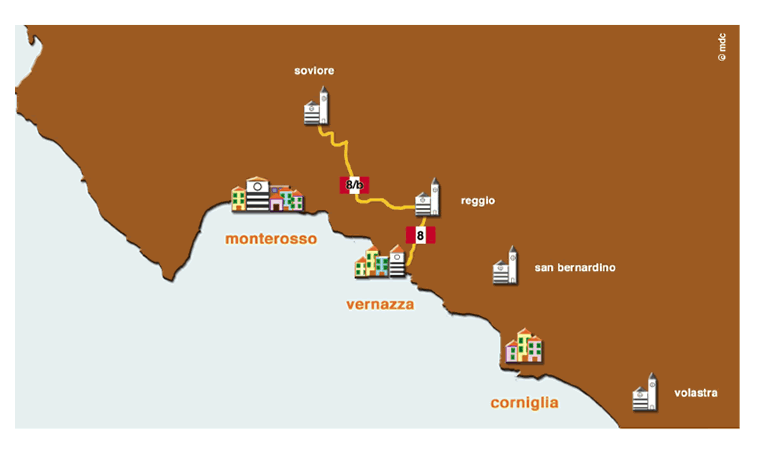
Leaving the santuario di Reggio (Sanctuary of Reggio) one goes up along the road which goes to Foce Drignana until one meets path 8/a, a mule-track not well used, both due to its length as well as for the lack of significant views, reason for which in some places it is difficult to pass along. The path, which follows an orographic profile, bending first of all towards the inside, then again towards the sea, crossing olive trees and torrents, along past fields and small nuclei more or less inhabited, sometimes on tracks, sometimes on real mule-tracks. At the height of Muro Superiore one finally meets the road which goes to the small built up area of San Bernardino (St. Bernard), in which springs up the santuario di Nostra Signora delle Grazie (Sanctuary of Our Lady of Grace).
Alternativa: from the santuario one can rejoin the Sentiero Azzurro (blue path) both towards Vernazza, thanks to path no. 7 and above Corniglia, with the harsher path 7/b.
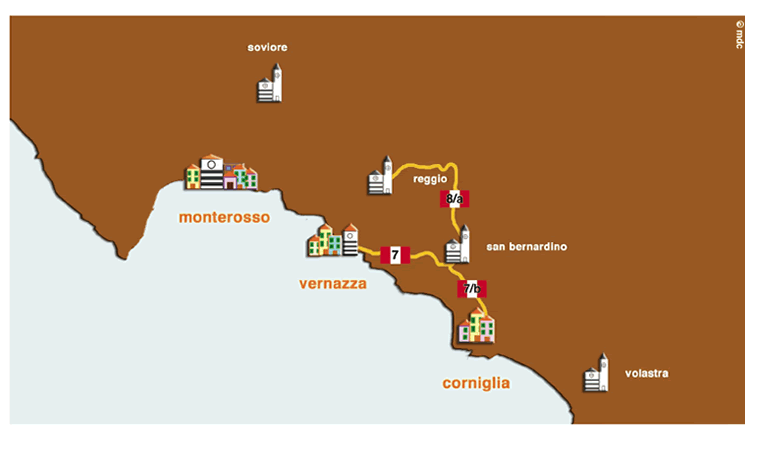
From the santuario di San Bernardino (Sanctuary of St. Bernard) one takes path no. 7 until one reaches the small built up area of Casa Fornacchi. From here one leaves the mule-track and walks along the road in the direction of Riomaggiore; the road coincides for a few hundred metres with path no. 7/a which descends from the crest. Reaching the junction of Case Pianca one goes along path no. 6/d which going along through woods, terraces and small streams, reaches Porciano, a miniscule rural village supposedly of Roman origin. Again a short stretch halfway up the hill, from which one gets a magnificent view of Corniglia and Manarola and one reaches Volastra where one finds the santuario di Nostra Signora della Salute (Sanctuary of Our Lady of Health).
Alternative: descending from the santuario, past the village, one continues along path no. 6 which ends in front of the car park behind the built up area of Manarola.
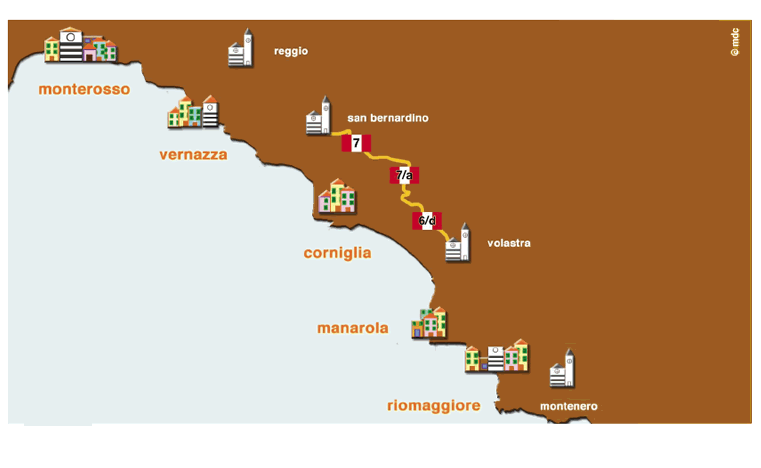
From Volastra one takes path no. 6, the same one that descends towards Manarola, until one meets the Strada dei Santuari (Road of the Sanctuaries), a few hundred metres before the junction which goes to the village. From here one walks along the road, normally there is not heavy traffic and, after having gone through a tunnel, one finds a wide bend which bends downwards near here path no. 3 starts, which goes up to Riomaggione and takes one up to the crest crossing half way up the hill the square where the santuario della Madonna di Montenero (Sanctuary of the Virgin Mary of Montenero) lies.
Alternative: after having left the santuario one goes up again, still along path no. 3, until one reaches a track. From here one can reach Il Telegrafo, still following the white road, or taking the mule-track again and meeting the Sentiero del Crinale (path of the crest) higher up at the height of Forte Bramapane (Fort Bramapane).
